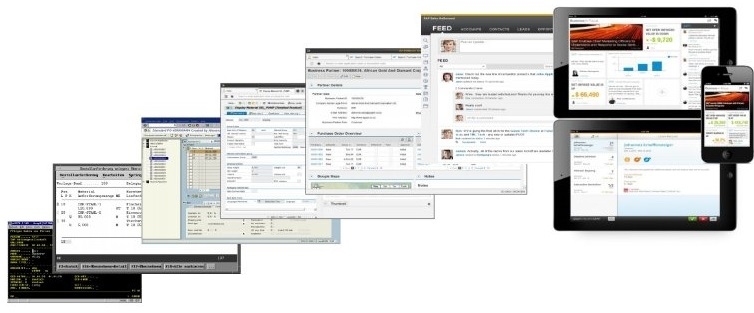SAP Timeline
1972: SAP R/1 start (approx. 40 customers)
There was no Graphic User Interface (GUI) yet and the very first version of SAP ran on IBM servers and an MS DOS system.
1979: SAP R/2 (approx. 2,200 customers)
On a Mainframe real time data was processed for accounting, production processes, supply chain logistics and human resources.
1992: SAP R/3 (approx. 15,000 customers)
An ERP solution with a 3-layer architecture, which could be used by enterprises for the first time. The three layers consisted of the database layer, the application layer and the presentation layer (GUI). R/3 remains to this day the most widely used version of SAP.
2000: mySAP ERP (approx. 41,000 customers)
Client/Server solution: mySAP PLM, mySAP SRM, mySAP CRM and mySAP SCM.
2005: SAP ERP (approx. 100,000 customers)
SAP ERP is the foundation of SAP's industry solutions and a springboard to the Service Oriented Architecture (SOA) of enterprises. It contains SAP ERP Central Component (ECC) and Enhancement Packages (EhP).
2009: SAP Business Suite (approx. 215,000 customers)
SAP started to focus on medium-sized enterprises and developed this product on the same codebase as SAP R/3 from the SAP Netweaver platform.
2016: SAP S/4 HANA (available in 188 countries).
Designed to help companies optimise performance and reduce IT costs. Includes SRM, CRM, SCM, PLM & ERP in one platform.
 SAP User Interface through the decennia
SAP User Interface through the decennia
